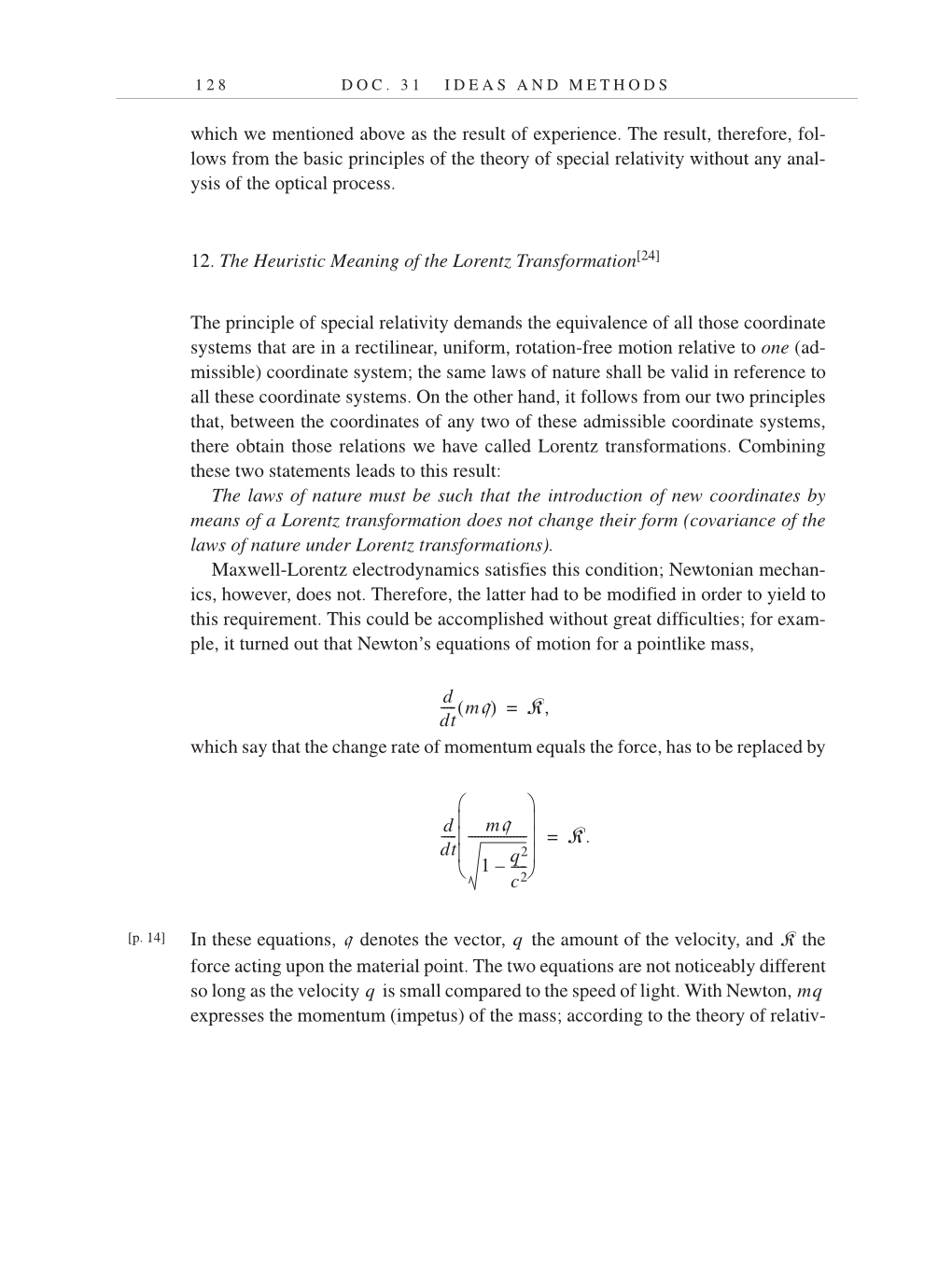1 2 8 D O C . 3 1 I D E A S A N D M E T H O D S
which we mentioned above as the result of experience. The result, therefore, fol-
lows from the basic principles of the theory of special relativity without any anal-
ysis of the optical process.
12. The Heuristic Meaning of the Lorentz
Transformation[24]
The principle of special relativity demands the equivalence of all those coordinate
systems that are in a rectilinear, uniform, rotation-free motion relative to one (ad-
missible) coordinate system; the same laws of nature shall be valid in reference to
all these coordinate systems. On the other hand, it follows from our two principles
that, between the coordinates of any two of these admissible coordinate systems,
there obtain those relations we have called Lorentz transformations. Combining
these two statements leads to this result:
The laws of nature must be such that the introduction of new coordinates by
means of a Lorentz transformation does not change their form (covariance of the
laws of nature under Lorentz transformations).
Maxwell-Lorentz electrodynamics satisfies this condition; Newtonian mechan-
ics, however, does not. Therefore, the latter had to be modified in order to yield to
this requirement. This could be accomplished without great difficulties; for exam-
ple, it turned out that Newton’s equations of motion for a pointlike mass,
,
which say that the change rate of momentum equals the force, has to be replaced by
.
In these equations, denotes the vector, the amount of the velocity, and the
force acting upon the material point. The two equations are not noticeably different
so long as the velocity is small compared to the speed of light. With Newton,
expresses the momentum (impetus) of the mass; according to the theory of relativ-
d-(mq)
dt
----
K
=
d-⎜
dt⎜
----
mq
1
q2⎟
----c2⎠- –
------------------⎟
⎝
⎜ ⎟
⎛ ⎞
K
=
[p. 14]
q q K
q mq
